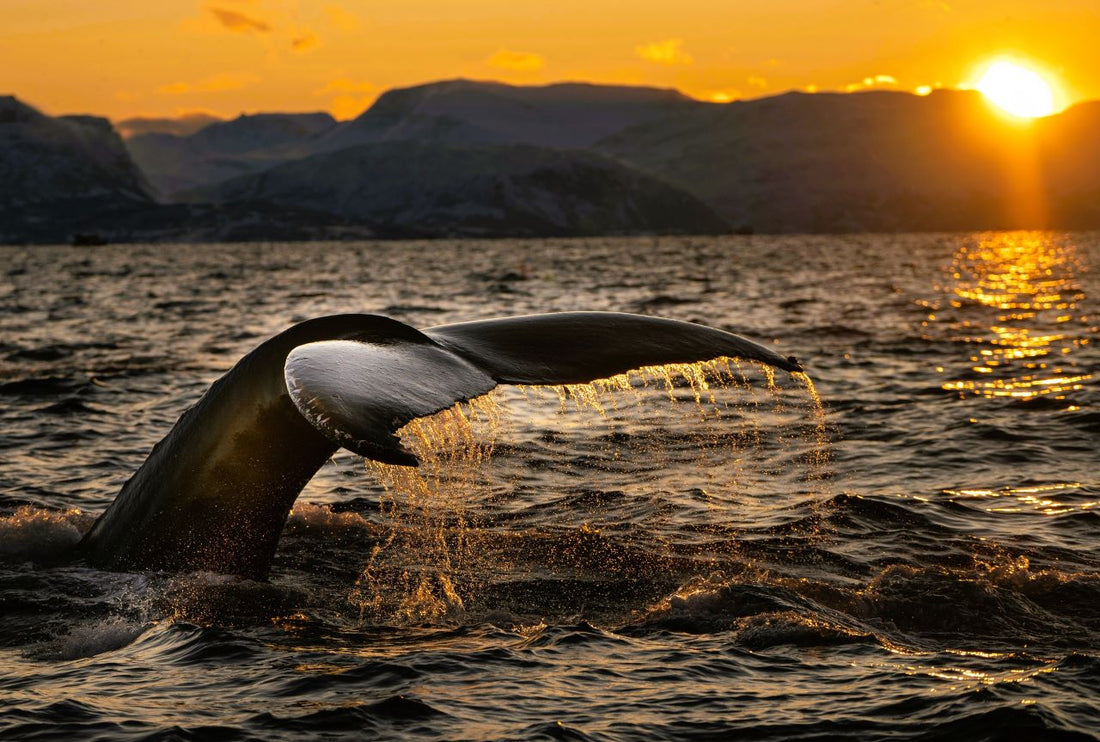
Do Whales Sleep Like Us? Dive Deep into the Resting Habits of Ocean Giants
SHOO-FOO TeamShare
Ever wondered if those majestic whales and playful dolphins ever catch some Zzz's? As it turns out, catching some shut-eye underwater isn't quite the same as curling up in your cozy bed. But whales, dolphins, and other marine mammals definitely need rest, and their sleep habits are just as fascinating as their underwater world.
Sleepless in Seattle? Not Quite!
Unlike us humans with our neatly defined sleep cycles, whales and dolphins don't completely power down for the night. They're more like vigilant security guards, keeping one eye (or should we say blowhole?) open for danger. This unique sleep style is called unihemispheric sleep. Basically, one half of their brain sleeps while the other half stays awake, allowing them to remain partially aware of their surroundings and potential threats like predators or approaching ships.
Imagine trying to catch some sleep with just half your brain! It sounds exhausting, but for whales and dolphins, it's an ingenious adaptation for survival in the vast ocean.
Sleeping Positions: From Horizontal Hangers to Vertical Veggies
So how exactly do these marine marvels manage to catch some rest? Well, their sleep positions can be quite diverse, depending on the species. Here's a glimpse into the underwater slumber parties:
- Horizontal Hangers: Humpback whales are known for a sleep style called "logging." They simply lie motionless on the surface of the water, appearing to be horizontal logs bobbing in the waves. It might not look very energetic, but this resting state allows them to conserve energy.
- Vertical Veggies: Sperm whales, on the other hand, take a more vertical approach to sleep. They can be found hanging out (literally!) in a vertical position, heads down near the surface. Scientists believe this posture might help them regulate their body temperature.
- Dolphin Doze: Dolphins tend to sleep in short bursts, often while swimming slowly alongside other pod members. They might even take turns napping, ensuring there's always at least one dolphin on guard duty.
Snooze Time for Different Folks
The amount of sleep these marine mammals need varies depending on the species. Toothed whales, like dolphins and orcas, typically sleep for shorter periods throughout the day, totalling around 4-8 hours. Baleen whales, like humpbacks and blues, might sleep for longer stretches, sometimes reaching up to 15 hours!
But sleep patterns aren't rigid. Factors like age, environment, and even food availability can influence how much rest these creatures need.
The Challenges of Underwater Dreams
Sleeping underwater comes with its own set of challenges. Whales and dolphins need to come up for air regularly, so staying completely unconscious for long periods isn't an option. This is why unihemispheric sleep is such a crucial adaptation. It allows them to get some rest while still being able to surface for air and stay alert to potential dangers.
Brainwaves Don't Lie: The Science of Sleep in Whales
Scientists use a variety of techniques to study sleep in whales and dolphins. One way is by monitoring their brainwaves using electroencephalograms (EEGs). These devices can detect changes in brain activity, allowing researchers to identify periods of sleep and wakefulness.
Studies have shown that the brainwave patterns of whales and dolphins during sleep are different from those of land mammals. This further supports the idea of unihemispheric sleep, where one hemisphere exhibits sleep-like brain activity while the other remains alert.
Beyond Sleep: Resting and Relaxation in the Ocean
While sleep is essential, it's not the only way these ocean giants get some rest. Whales and dolphins also engage in periods of quiet inactivity, which might not be true sleep but allows them to conserve energy. Imagine floating peacefully in the ocean, basking in the sun – sounds like a pretty good way to unwind, wouldn't you agree?
The Mystery of Whale Dreams: Do They Dream of Electric Fish?
Unfortunately, we can't ask whales and dolphins what they dream about (although wouldn't it be fascinating to know if they dream of swimming through fields of giant kelp or chasing schools of shimmering fish?).
Scientists can only speculate about the dream life of these creatures. But considering the complexity of their brains, it's possible that they do experience some form of dreaming during sleep or rest periods.
The Importance of Understanding Sleep in Marine Mammals
Studying sleep patterns in whales and dolphins is not just about satisfying our curiosity (although, let's be honest, it's pretty darn interesting!). Understanding how these creatures rest is crucial for their conservation.
For instance, knowing how much sleep different species need can help us minimize disruptions caused by human Activities and Threats That Disrupt Slumber
Human activity can significantly disrupt the delicate sleep patterns of whales and dolphins. Here are some key concerns:
- Noise Pollution: The booming sounds of ship engines and sonar can interfere with their ability to communicate and navigate. Imagine trying to catch some sleep with a jackhammer going off next door – not exactly conducive to rest, right?
- Habitat Loss: The destruction of their natural habitat due to coastal development and pollution forces these creatures to spend more energy searching for food and safe havens. This leaves them with less time and energy for proper rest.
- Climate Change: Rising ocean temperatures and disruptions in food chains caused by climate change can also impact their sleep patterns and overall health.
By understanding how these factors affect their rest, we can develop strategies to minimize disruptions and create a more ocean-friendly environment.
Beyond Sleep: The Social Lives of Whales and Dolphins
Sleep might be a solitary activity for us humans, but for whales and dolphins, social interaction plays a vital role in their rest and relaxation.
- Pod Power: Many species of whales and dolphins are highly social creatures, living in close-knit pods. These pods provide a sense of security and can even take turns napping, ensuring there's always someone on the lookout for danger. It's like having a built-in sleep buddy system!
- Calf Care: Mothers play a crucial role in protecting their young while they rest. Dolphin calves, for example, are particularly vulnerable during sleep, and mothers will stay close by, nudging them to the surface for breaths if needed. It's a heartwarming display of maternal devotion, even in the underwater world.
The Evolutionary Arms Race: Sleep and Survival in the Ocean
The sleep habits of whales and dolphins are a fascinating example of how evolution has shaped them to thrive in their environment. Unihemispheric sleep allows them to remain vigilant in a vast and potentially dangerous ocean.
It's a testament to the incredible adaptations that have allowed these magnificent creatures to survive and flourish for millions of years.
Citizen Science: Helping Us Understand Whale Sleep
While scientists are making great strides in understanding whale and dolphin sleep, there's still much to learn. Citizen science initiatives offer a way for the public to get involved in this exciting field.
Here are some ways you can contribute:
- Volunteer for whale-watching organizations: These groups often collect valuable data on whale behavior, including sleep patterns.
- Report sightings: Documenting whale and dolphin activity can help researchers understand their movements and habitat use.
- Support conservation efforts: Organizations dedicated to marine mammal conservation play a vital role in protecting these creatures and their sleep havens.
Every contribution, big or small, helps us learn more about these amazing animals and ensure they can continue their underwater slumber parties for generations to come.
So, Do Whales Dream of Electric Sheep, or Maybe Electric Fish?
The mystery of whale dreams remains unsolved. But one thing is certain: the sleep habits of whales and dolphins are far from boring. They are a testament to the remarkable adaptations of these intelligent and social creatures.
By delving deeper into the world of underwater sleep, we gain a greater appreciation for the fascinating lives of these ocean giants and the importance of protecting their environment. So, the next time you gaze out at the ocean, remember, beneath the waves, a symphony of snores and gentle breathing might be taking place – a lullaby for the majestic creatures that call the ocean home.
And if you prefer to sleep like a human, see what we have in store for you :)

